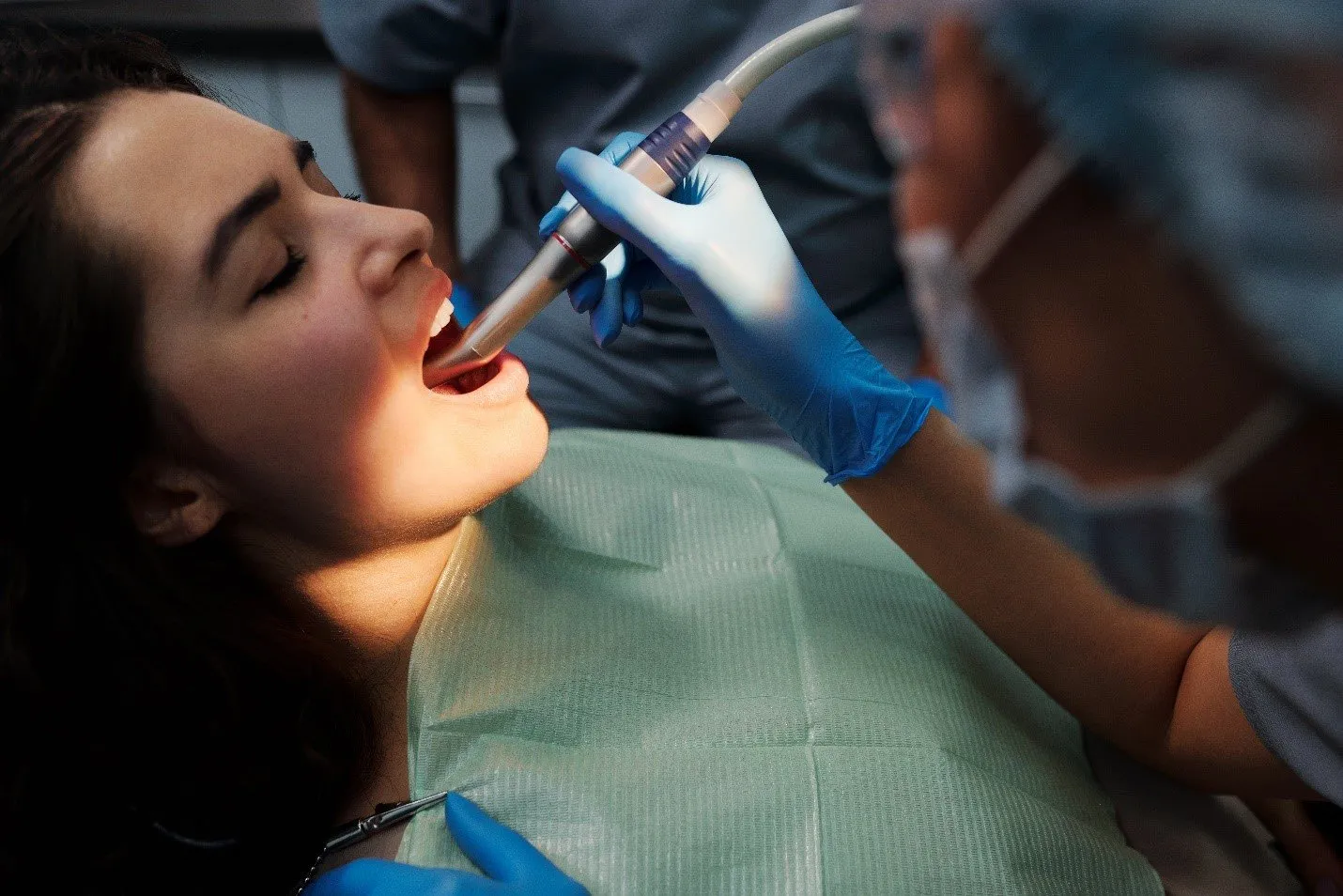Worried you might have gum disease? The gum disease specialists at Mawson Dental Care can perform a check up on your gums and provide treatment if necessary.
Gum disease is a very common oral health problem among adults in Australia. In fact, about 3 out of every 10 adults suffer from moderate to serious forms of gum disease.
 What is Gum Disease?
What is Gum Disease?
Gum disease is an oral health issue characterised by the damaging of the gums and bones around your teeth. It comes in two stages: the first being gingivitis, and the second being periodontitis or periodontal disease.
Gingivitis, the early stage of gum disease, involves the swelling and bleeding of gums. If left unchecked, gingivitis can progress to periodontitis, which is a more serious problem that can lead to chewing problems, sensitive teeth, and tooth loss, among others.
What are the Symptoms of Gum Disease?
There are different symptoms in each stage of gum disease, with the more serious ones occurring during advanced stages. The worrisome thing about it is that gum disease often goes unnoticed during the early stages. But if you carefully look out for its symptoms, you have a chance to beat it before it turns into something worse.
To help you determine if you have gum disease or not, here are some of its most common symptoms:
- Mouth sores
- Red, swollen gums
- Constant bad breath
- Pus between the teeth and gums
- Loose or separating permanent teeth
- Changes with your teeth when you bite
- Pulling away or receding gums
- Bleeding gums when you brush or floss
What is the Best Treatment for Gum Disease?
The best way to treat gum disease is by practising good oral hygiene. This means brushing your teeth twice a day, flossing your teeth on a regular basis, rinising your mouth with antibacterial mouthwash, and visiting the dentist regularly for routine check-ups.
What Are Other Ways to Treat Gum Disease?
While the best way to prevent gum disease is by maintaining good oral hygiene, there are many treatment options available for those who are already suffering from gum disease. Let’s take a look at the most common gum disease treatments offered by local periodontal dentists.
Dental Cleaning
Dental cleaning for gum disease treatment involves going above and under the gum line of the teeth to remove all the plaque and tartar on your teeth. However, dental cleaning is more of a preventive measure for gum disease and is not to be considered a treatment.
Scaling
Scaling is a more in-depth cleaning procedure that involves the removal of the buildup of plaque and tartar by scraping them away using special instruments. Similar to dental cleaning, the dentist operates above and below the gum line.
Root Planing
Root planing is a treatment that smoothens the rough spots on the roots of your teeth to get rid of bacteria. It is necessary when you have a plaque buildup under the gums.
Flap Surgery
During this procedure the surgeon lifts up your gums and removes the tartar underneath your gum line. Once all the tartar has been cleared, your gums are stitched back in a way that the tissue fits nicely around the tooth to prevent the formation of tartar.
Gum Graft Surgery
This procedure involves taking tissue from another part of your mouth (usually from the roof of the mouth) and putting it in areas where gums have receded. Gum grafts help to prevent bone loss or decay.
Looking for a Periodontal Dentist Near Me?
If you want to have healthy gums again or are looking to prevent the onset of gum disease, the dental professionals at Mawson Dental Care are ready to offer you with the highest quality of gum care.
Contact us today if you have any questions or want to book an appointment.
Related Posts
October 2, 2024
Dental anxiety how to overcome for a positive dental experience
Conquer dental anxiety with these effective techniques and strategies, which…
October 1, 2024
Cavity vs Stain: How to Tell the Difference and What Actions to Take
Discover the differences between cavities and stains, and learn effective…
September 30, 2024
Wisdom Tooth Pain: Causes, Symptoms, and Treatment
Discover the causes, symptoms, and treatment options for wisdom tooth pain.…




